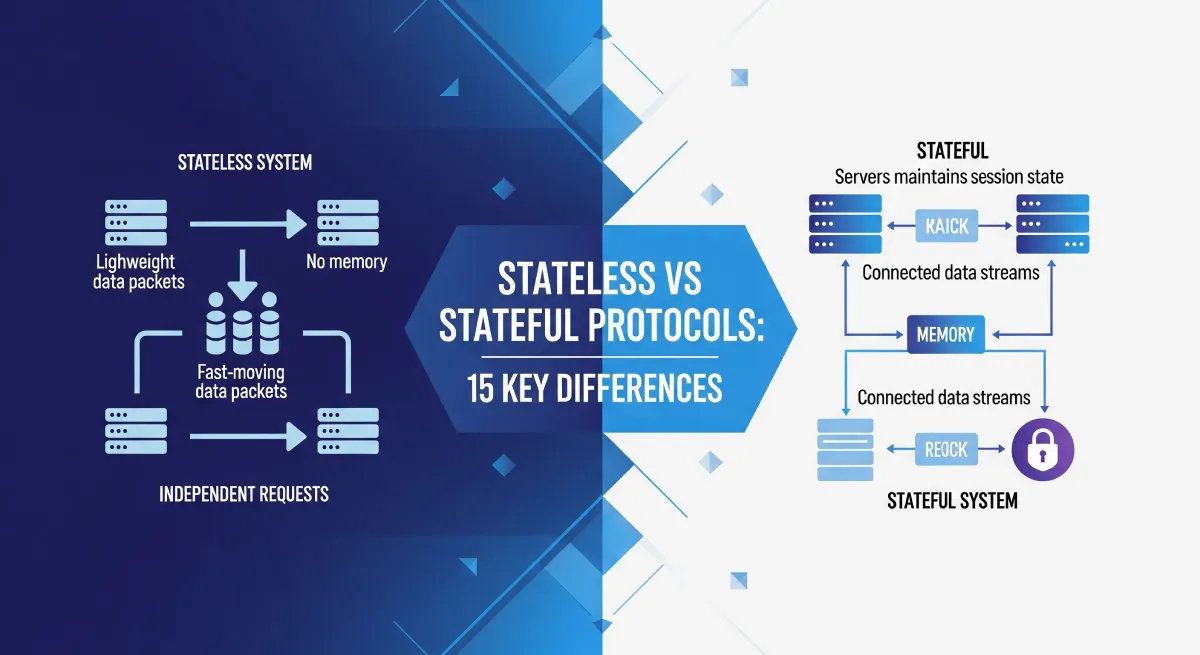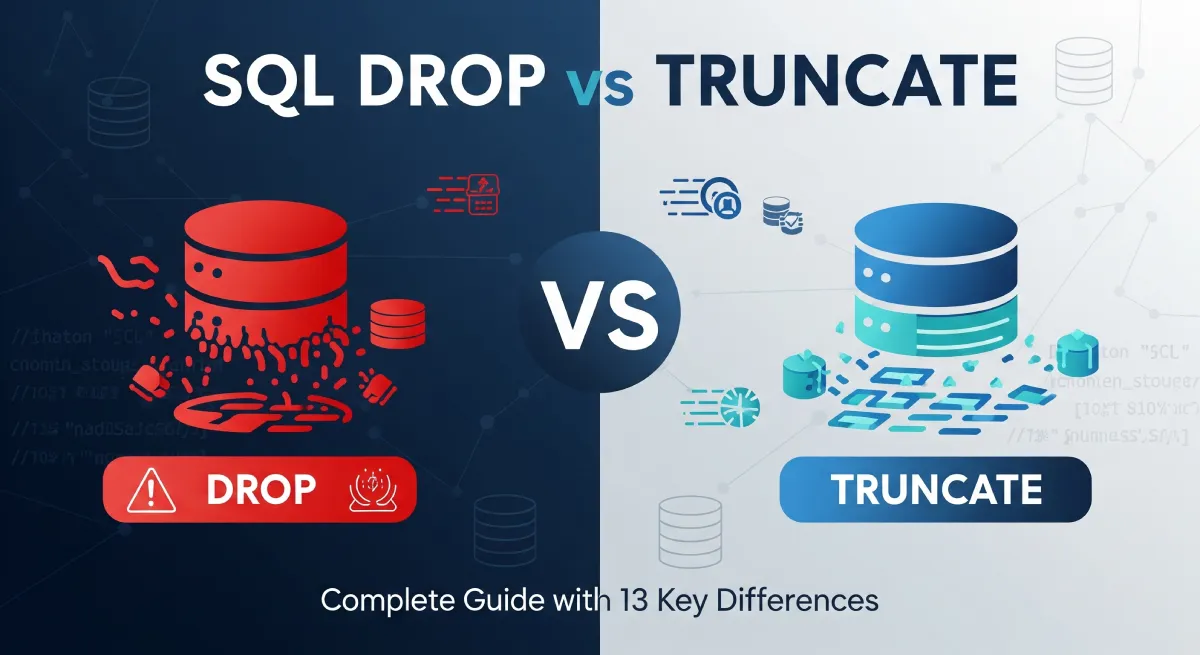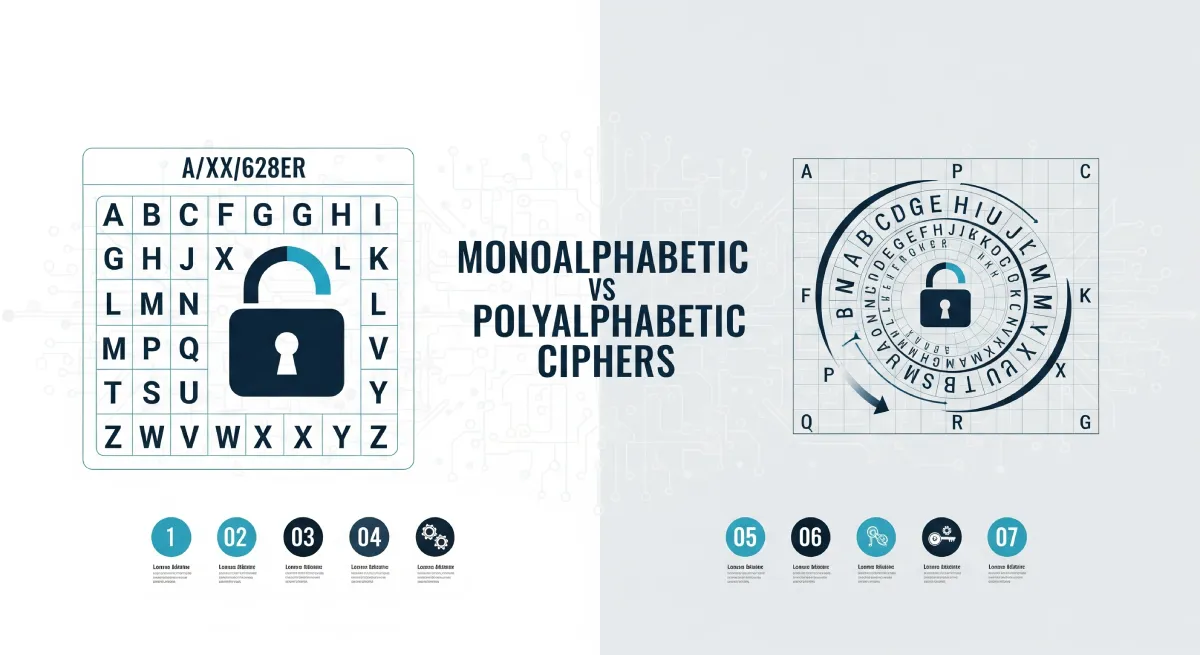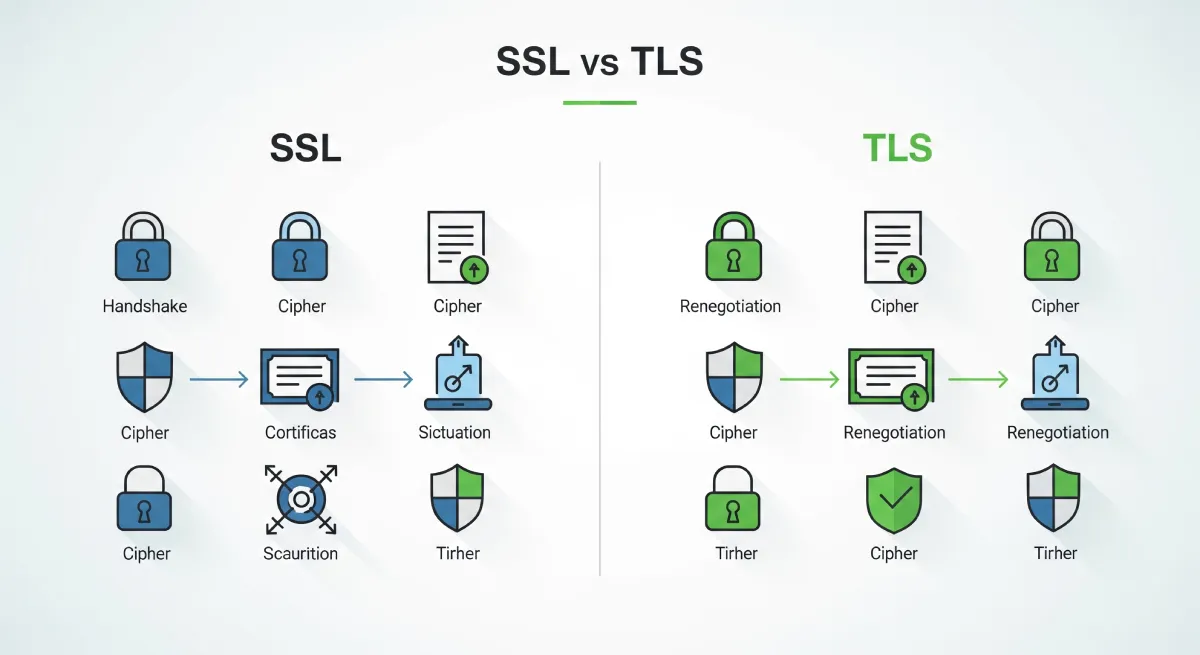Understanding shallow copy vs deep copy is essential for effective object handling in classes. A shallow copy duplicates references, leading to shared memory between objects, while a deep copy creates independent copies of all object data. This guide explains their differences and when to use each approach in programming.
Shallow Copy
A shallow copy of an object creates a new object but does not duplicate the referenced data within the object. In other words, only the object itself is copied, and references to the data inside the object are shared between the original and the copied object. Any changes made to the shared data will reflect in both objects.
Example:
class Person {
constructor(name, age) {
this.name = name;
this.age = age;
}
}
const person1 = new Person('Alice', 30);
const shallowCopy = Object.assign({}, person1);
shallowCopy.age = 31;
console.log(person1.age); // Output: 31
Advantages of Shallow Copy:
- Efficient in terms of memory usage as it does not duplicate the entire object.
- Useful when you want to replicate the object structure without duplicating the data.
Disadvantages of Shallow Copy:
- Potential for data inconsistency if shared data is mutable and modifications are made.
- Changes to nested objects are not reflected in the copied object, leading to unexpected behavior.
Deep Copy
A deep copy, on the other hand, creates a new object and recursively copies all nested objects and their data. This results in a completely independent copy where changes made to the original object do not affect the copied object and vice versa.
Example:
const deepCopy = JSON.parse(JSON.stringify(person1)); deepCopy.age = 32; console.log(person1.age); // Output: 31
Advantages of Deep Copy:
- Guarantees data isolation, ensuring that changes to one object do not impact the other.
- Useful when you need independent copies of complex nested data structures.
Disadvantages of Deep Copy:
- Can be less efficient in terms of memory and performance, especially for large and deeply nested objects.
- Potential for infinite recursion if circular references exist within the object.
Use Cases and Applications:
- Shallow copy is commonly used when you want to create a quick replica of an object for temporary manipulation.
- Deep copy is preferred when you need distinct, independent copies of complex objects or when working with immutable data.
- Deep copy is crucial in scenarios where changes to one copy should not affect other copies, such as in undo-redo functionalities or state management in applications.
Key Differences: Shallow Copy vs Deep Copy
| Shallow Copy | Deep Copy |
|---|---|
| Only copies the references of the objects | Copies the objects themselves along with all nested objects |
| Changes made to nested objects reflect in the copied object | Changes made to nested objects do not reflect in the copied object |
| Shallow copy creates a new object but does not create new objects referenced in the original object | Deep copy creates a new object and also creates new objects referenced in the original object |
| Shallow copy is faster and less memory-consuming | Deep copy is slower and more memory-consuming, especially for deeply nested objects |
| References in the copied object point to the same objects as the original | Each object in the copied object has its own copy in memory |
| Suitable for objects with less depth and complexity | Preferred for objects with deep nesting and complex structures |
| Changes to the copied object affect the original object | Changes to the copied object do not affect the original object |
| Simpler implementation | Requires more complex implementation, especially for handling circular references |
| May lead to unintended side effects due to shared references | Less prone to side effects as each object is independent |
| Shallow copy is a one-level copy of an object | Deep copy creates a full and independent copy of an object |
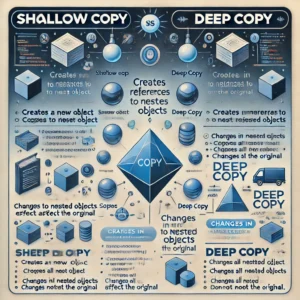
Practical Implementation
Shallow Copy Implementation
Let’s start with an example of shallow copying a class in Python:
class Person:
def __init__(self, name, age):
self.name = name
self.age = age
def shallow_copy(self):
return self
person1 = Person('Alice', 30)
person2 = person1.shallow_copy()
person1.age = 40
print(person2.age) Output: 40
Deep Copy Implementation
Now, let’s see how deep copying a class works:
import copy
class Person:
def __init__(self, name, age):
self.name = name
self.age = age
def deep_copy(self):
return copy.deepcopy(self)
person1 = Person('Alice', 30)
person2 = person1.deep_copy()
person1.age = 40
print(person2.age) Output: 30
Step-by-Step Implementation Guide
- Create a class with properties.
- Implement a shallow copy method that returns the object itself.
- Implement a deep copy method using the copy module.
- Test the shallow and deep copy methods with sample data.
Best Practices and Optimization Tips
- Use shallow copy when you want to create a new reference to the same data.
- Use deep copy when you need an independent copy of all data.
- Consider the performance implications of deep copying large objects.
Common Pitfalls and Solutions
One common pitfall is forgetting to deep copy nested objects within a class. Always ensure that all nested objects are also deep copied to avoid unintended reference sharing.
Frequently Asked Questions
What is the difference between shallow copy and deep copy for classes?
A shallow copy of a class creates a new object but does not replicate the internal objects it references. On the other hand, a deep copy duplicates both the main object and all the objects it references, creating a fully independent copy.
How is a shallow copy typically implemented for classes?
In most cases, a shallow copy for classes involves copying the values of all fields within the class. If the class contains references to other objects, the new copy will point to the same referenced objects as the original class.
When should I use a shallow copy for classes?
A shallow copy is useful when you want a new object that shares references to existing objects. This can be efficient when you don’t need to modify the internal objects independently between the original and copied class instances.
What are the advantages of using a deep copy for classes?
Deep copy ensures that changes made to the copied class do not affect the original class or vice versa. This provides data encapsulation and prevents unintended side effects when working with complex class structures.
How is deep copy typically implemented for classes?
Deep copy involves recursively copying all objects referenced by the main class, ensuring that a complete and independent copy is created. This process can be more resource-intensive but provides full isolation between the original and copied classes.
Conclusion
In conclusion, understanding the distinction between shallow and deep copy methods for classes is crucial for efficient programming and data management. Shallow copy duplicates only the references of objects, while deep copy creates independent copies of the objects themselves.
When deciding which method to use, it’s important to consider the complexity of the data structure and the desired level of independence between original and copied objects. For simple structures with no nested objects or references, a shallow copy may suffice. However, for complex structures with nested objects or references, a deep copy is necessary to ensure data integrity.
In general, deep copy is recommended for most scenarios to prevent unintended side effects and maintain data consistency. By creating independent copies, deep copy provides a safe way to manipulate data without impacting the original objects. On the other hand, shallow copy may be suitable for performance optimization in certain cases where object immutability is guaranteed.
Ultimately, the decision between shallow and deep copy should be based on the specific requirements of the program, considering factors such as data structure complexity, memory usage, and desired behavior. By carefully evaluating these criteria, developers can choose the most appropriate copy method to ensure reliable and efficient data handling in their applications.
